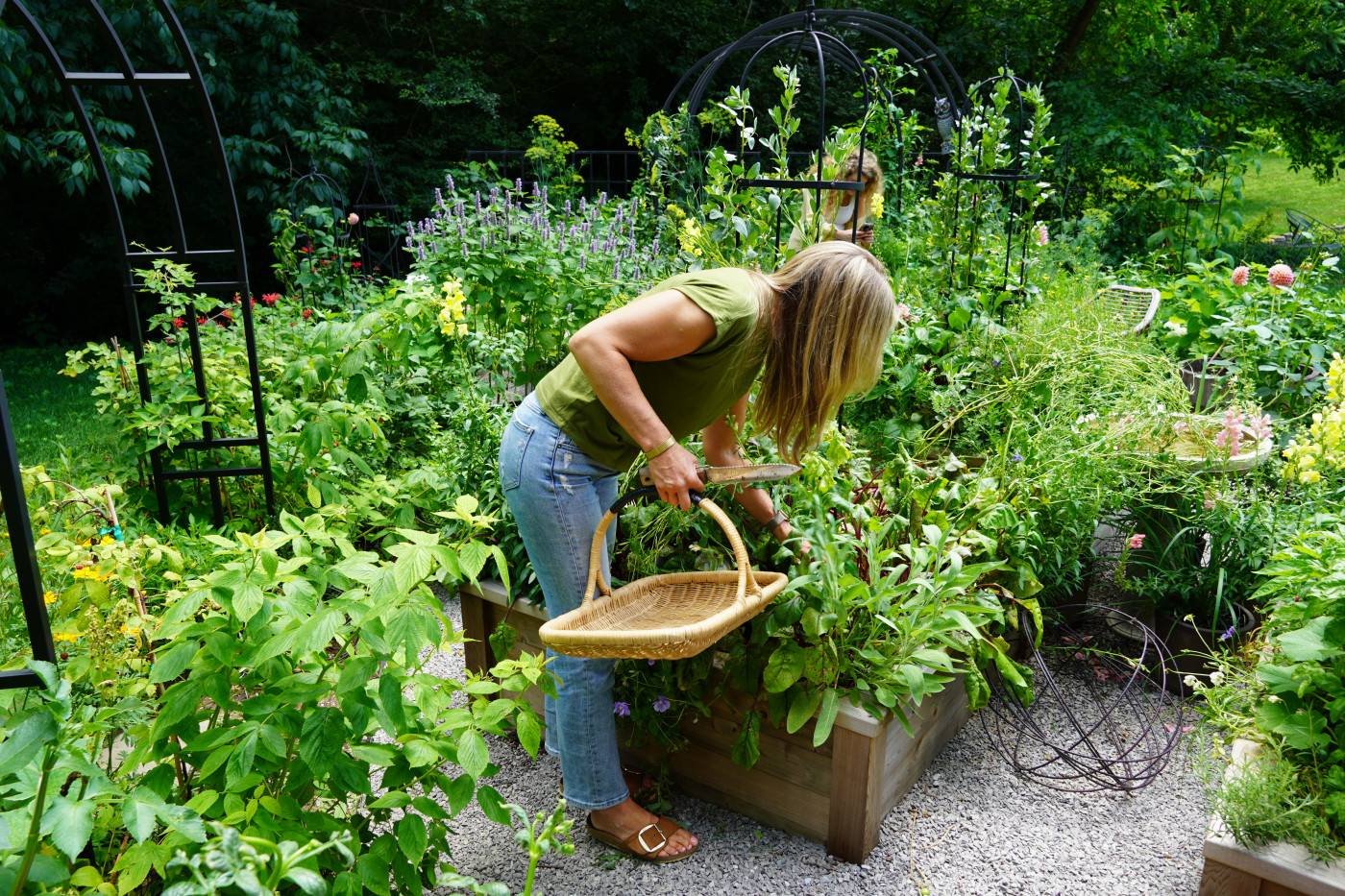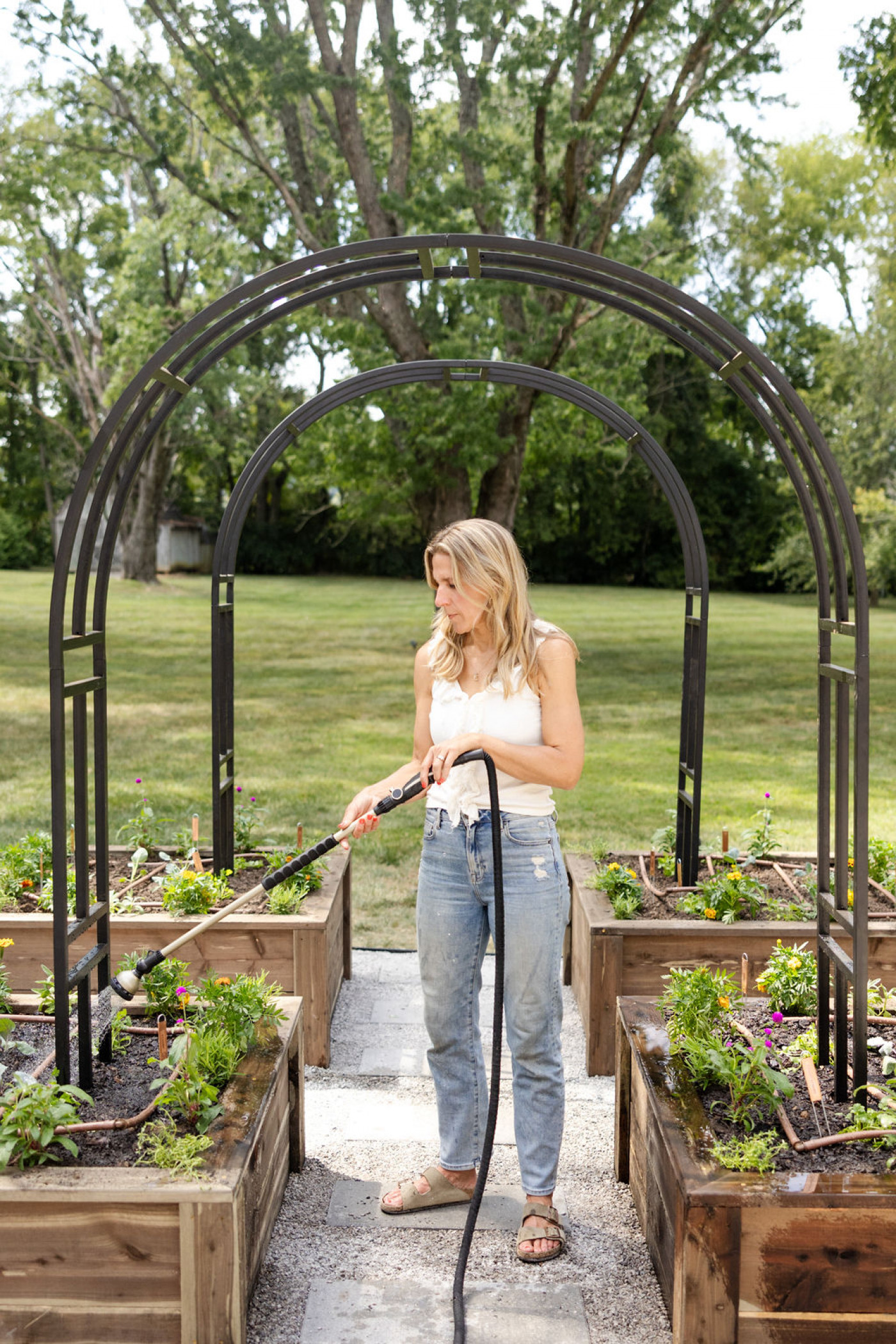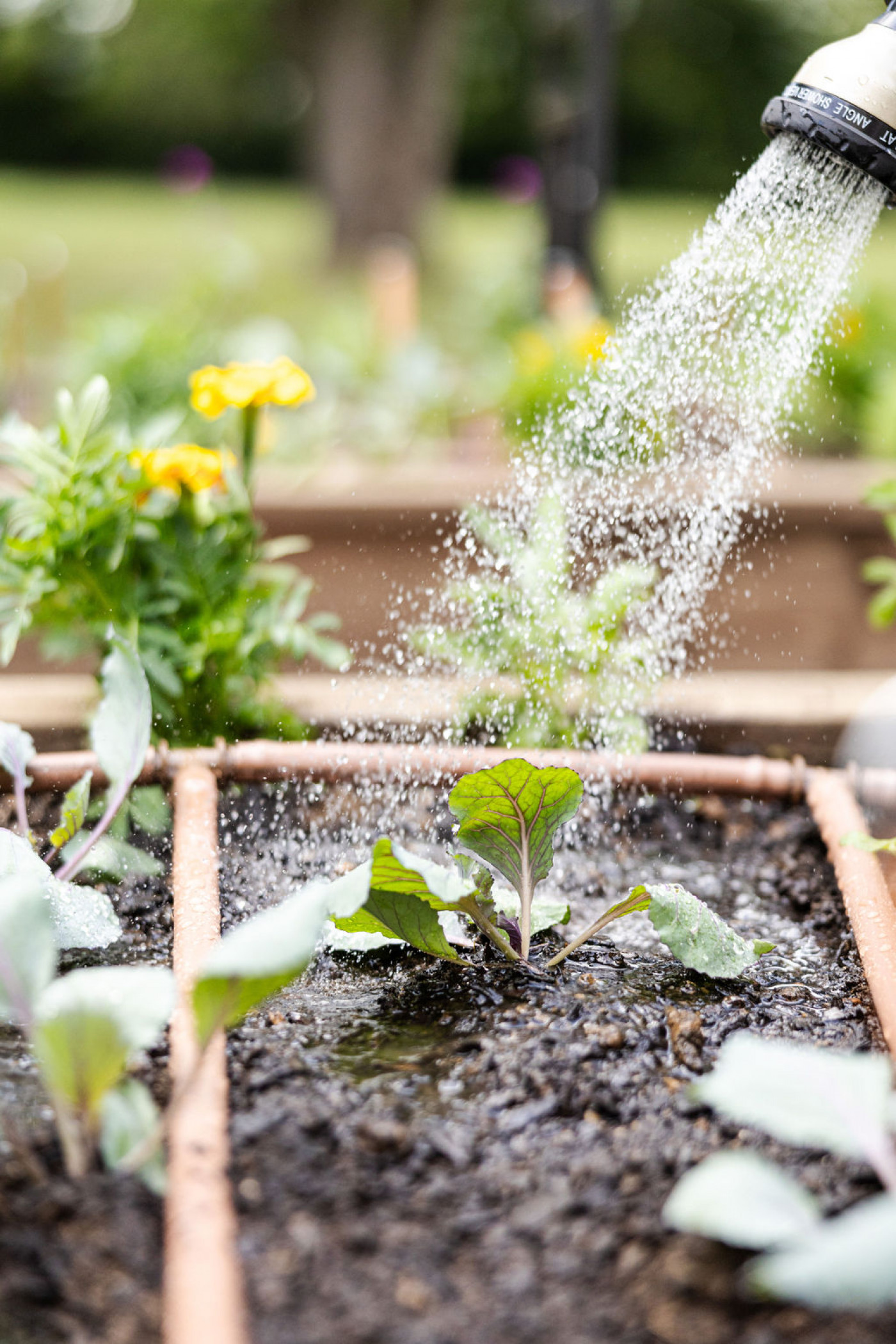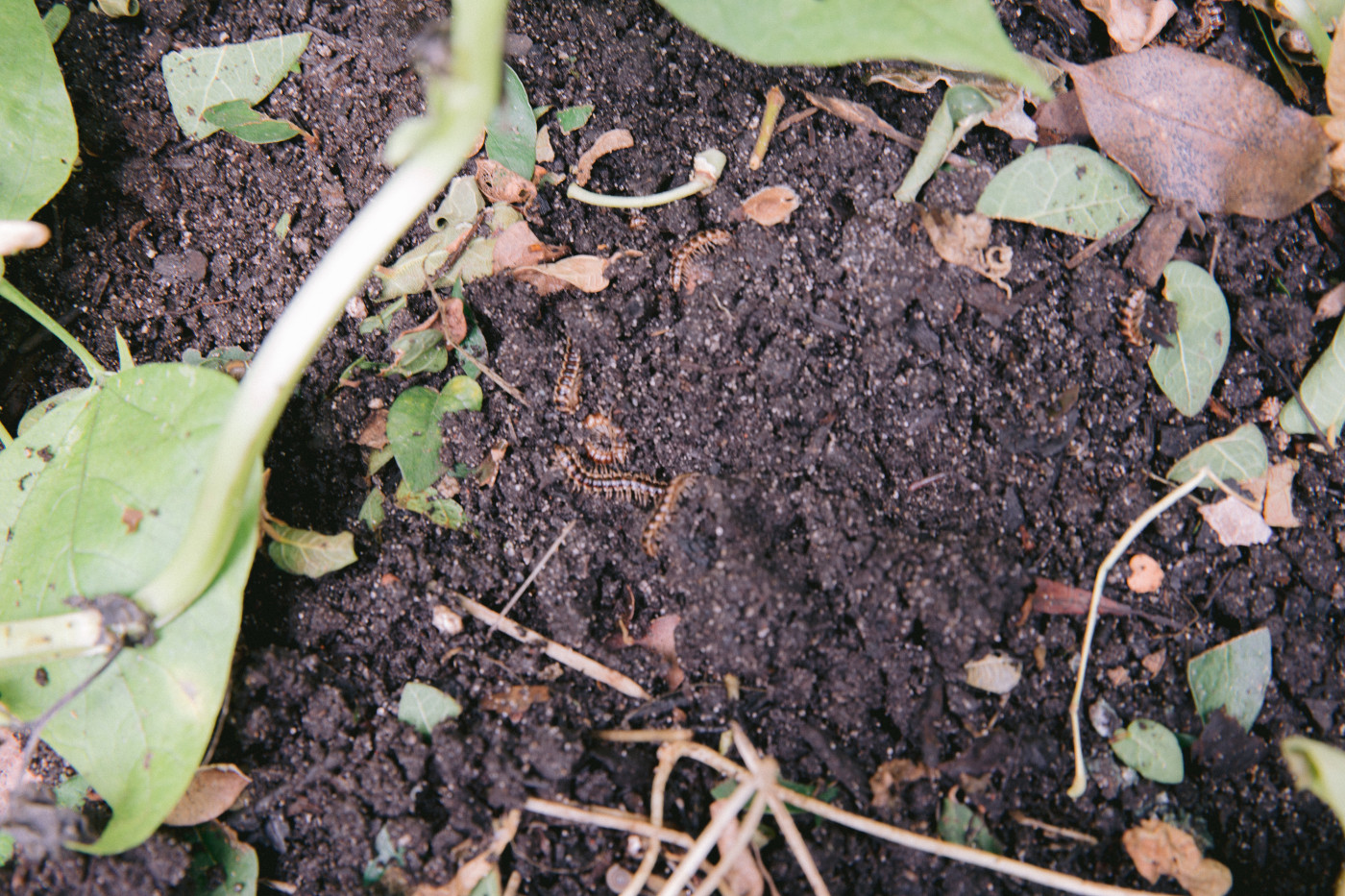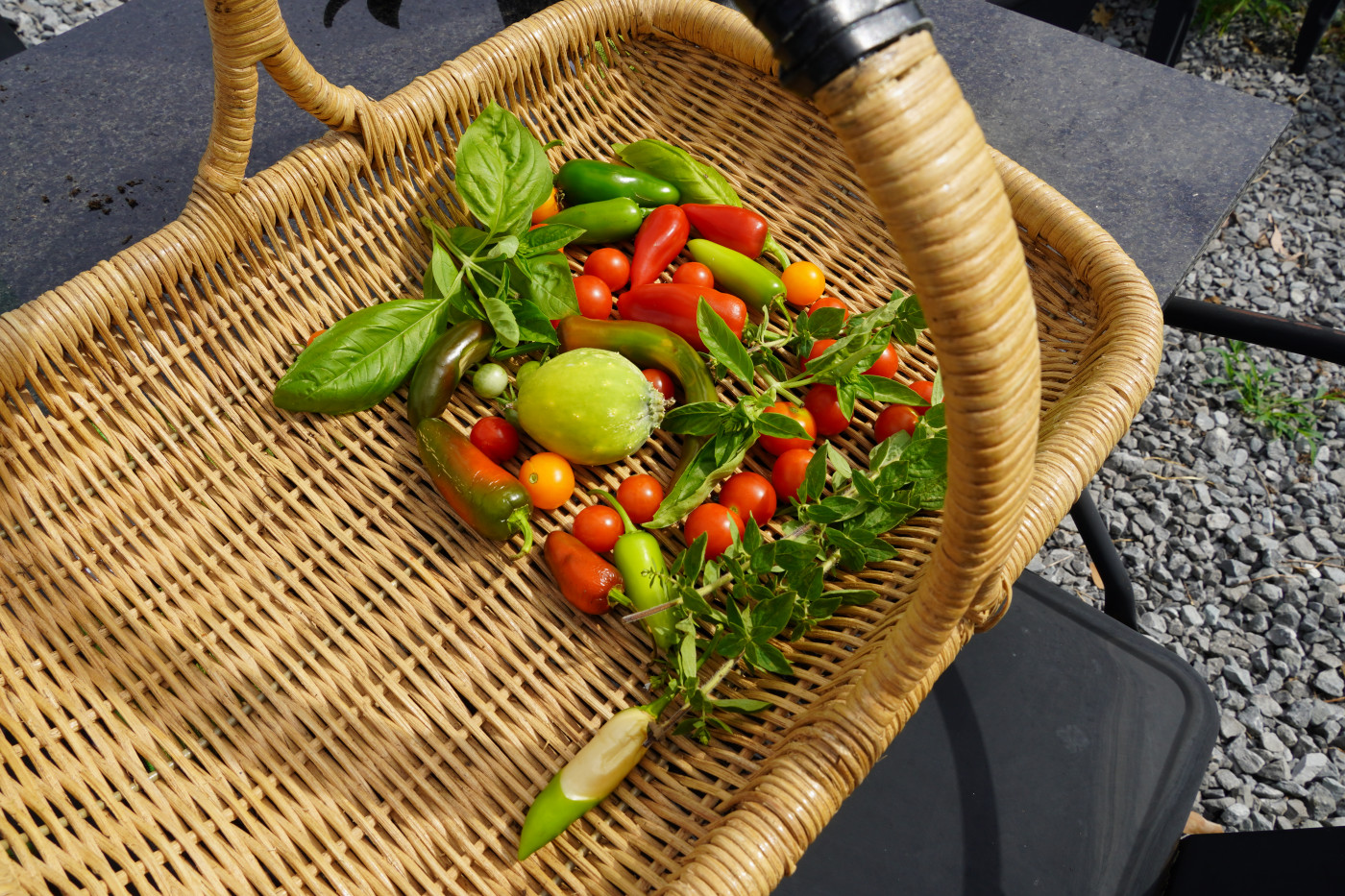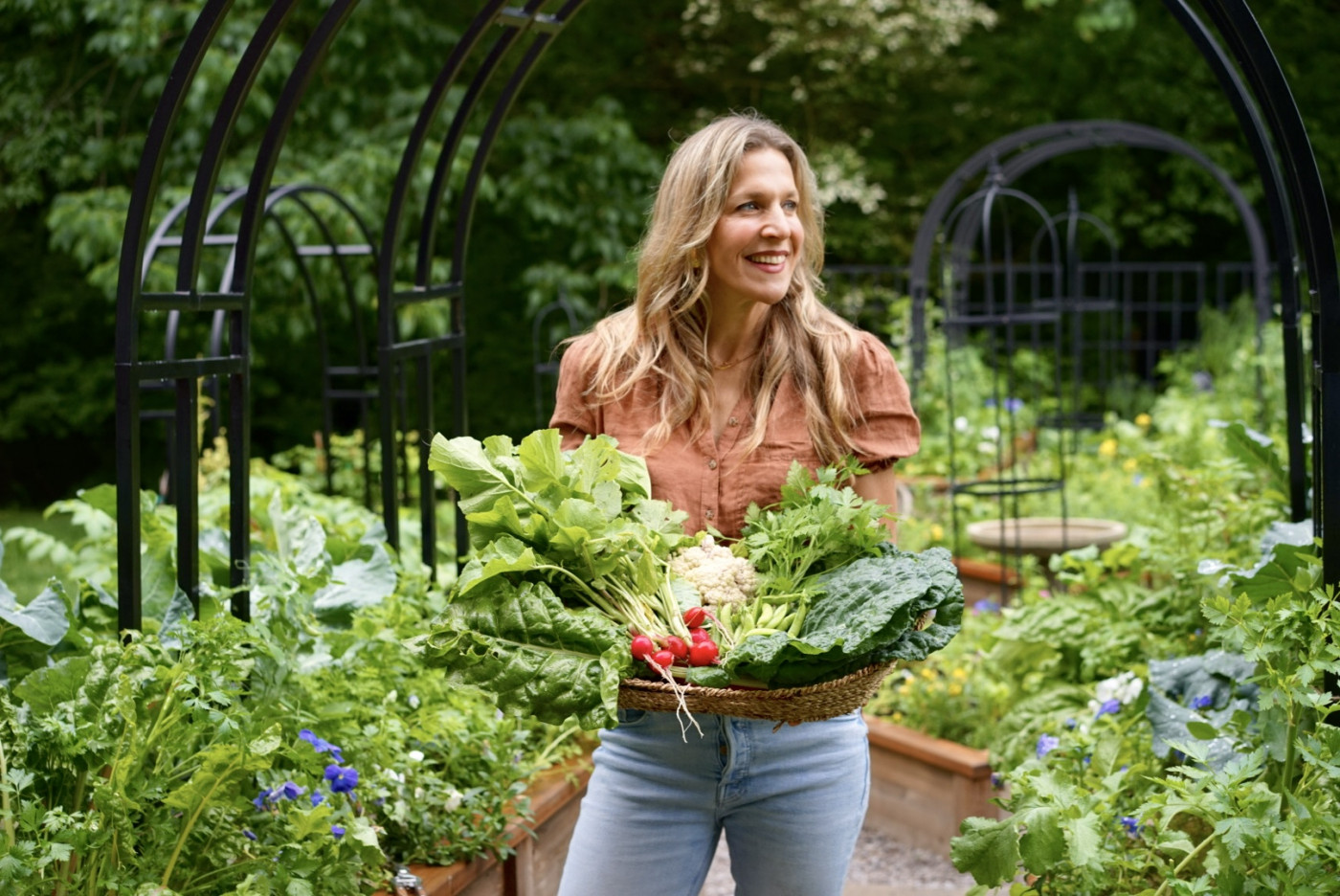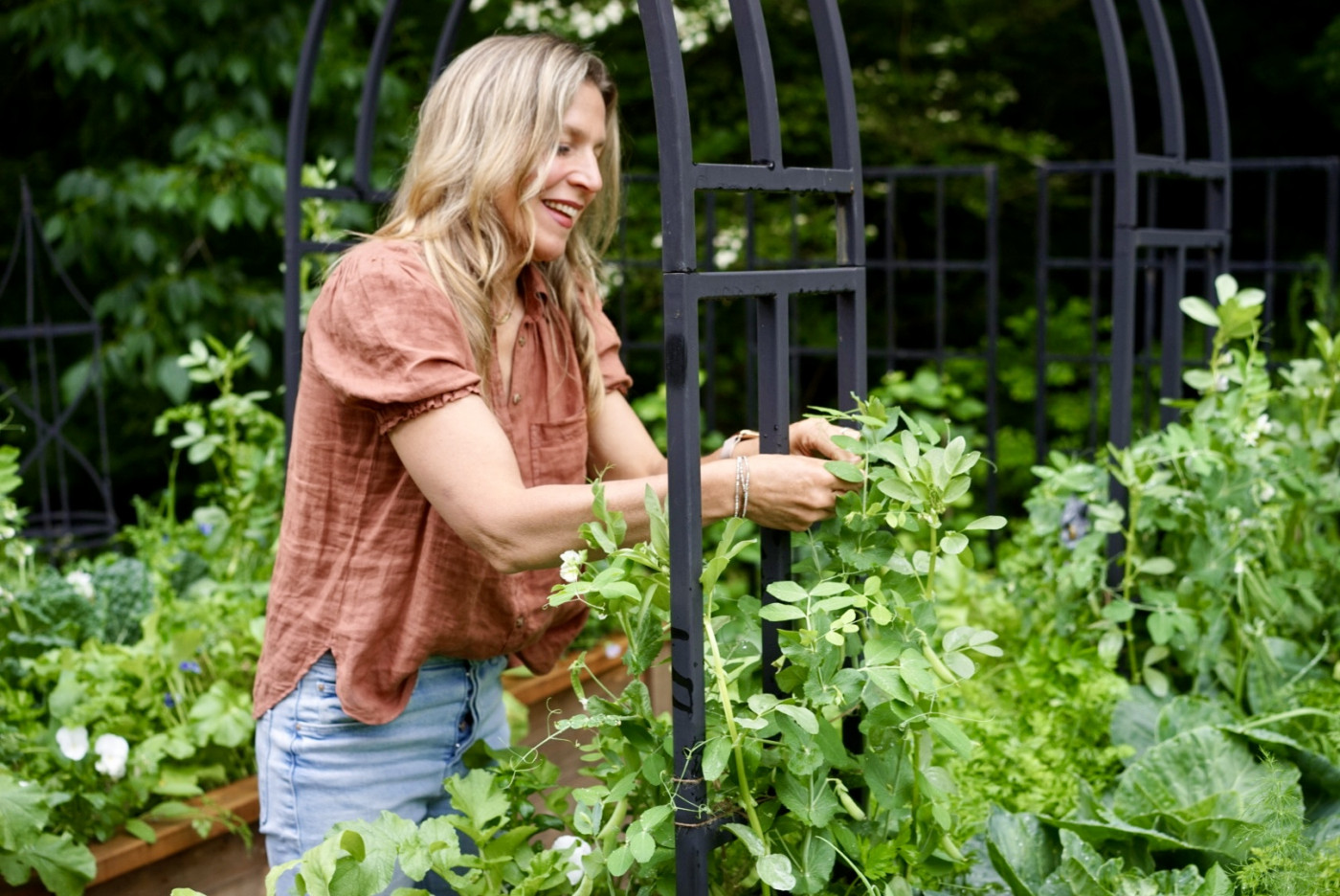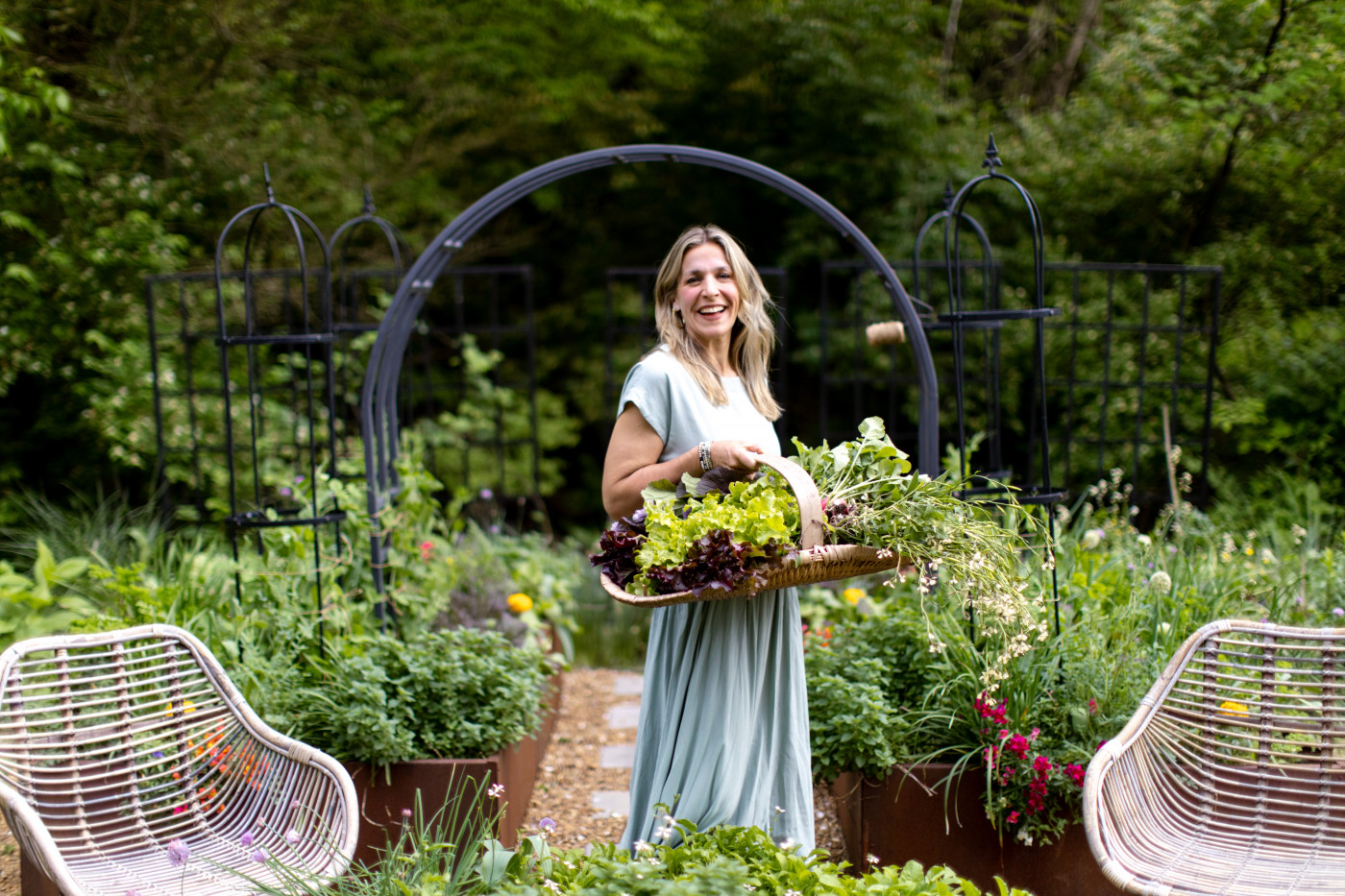At a Glance
- Discover the three simple words that can transform your entire gardening experience.
- Learn how keeping soil covered reduces watering, prevents weeds, and builds lasting fertility.
- See how the no bare soil method aligns with nature to create a thriving, self-sustaining kitchen garden.
3 Words That Will Change Your Garden
No bare soil! These three little words have a huge impact on any garden. I know that sounds like an exaggeration, but stay with me.
Most people think that garden success comes down to having a green thumb, the perfect property, or living in the ideal climate. Over the last decade, I’ve helped thousands of people all over the world build and grow their own kitchen gardens, and I can tell you for a fact—those things matter far less than you might think. The gardeners who found lasting success all discovered one powerful principle, and it’s wrapped up in three simple words: no bare soil.
Before I explain what that means and how it will change everything about your gardening experience, let’s talk about the three biggest problems that every gardener faces because this one principle solves all of them.
Problem 1: Endless Weeding and Watering
When we first start gardening, most of us imagine spending lazy mornings harvesting baskets full of greens and herbs. But what usually happens?
We find ourselves out there day after day, dragging the hose across the yard, trying to keep the soil from drying out. It seems like the minute we finish watering, the soil looks parched again. And instead of thriving plants, we see weeds popping up in every open patch between them.
Those weeds always seem to grow faster and stronger than anything we actually planted. It’s disheartening. You pull weeds, water again, and before you know it, they’re back.
All this weeding and watering doesn’t just wear you out—it wears out your garden, too. When the soil is constantly drying out and getting compacted, or when you miss a few days of watering because life got busy, the plants suffer. The plants become stressed, just like we do.
Bare soil is thirsty soil. It loses water faster than you can replace it, and it invites weeds to take over.
But here’s the good news—once you understand the idea of no bare soil, the weeding and watering cycle slows dramatically. The garden begins to hold its own moisture, the weeds are choked out naturally, and you finally start feeling like you’re working with your garden instead of constantly fighting against it.
Problem 2: Depleted Soil Nutrients
The second major challenge all gardeners face is maintaining healthy, nutrient-rich soil. Every time you plant something, that plant begins to draw nutrients from the soil, like calcium, nitrogen, potassium, and dozens of trace minerals that fuel its growth from seed to root to fruit.
That’s how nature works—plants grow by taking what they need from the soil. But what many gardeners don’t realize is that soil loses nutrients every time it’s left bare. Rain, wind, and sunlight all strip away organic matter and life. When your garden beds sit empty, even for a few weeks, the living system inside that soil begins to break down.
If you’ve ever felt like you’re constantly spending money on compost, fertilizer, or some new “miracle” amendment, you’ve probably been gardening with too much bare soil. When the soil is exposed, it’s like a leaky bucket; it just can’t hold on to what you’ve already poured into it.
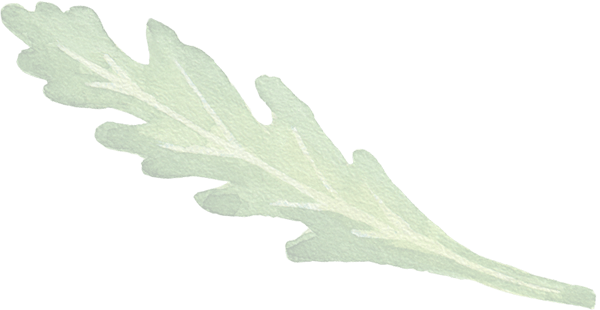

Start Your Garden the Easy Way
Get growing with 10 foolproof seed varieties, a 120-page gardening guide, planting plans, and step-by-step video lessons—all designed to help you succeed. The Easy Garden Kit makes it simple, fun, and affordable to bring fresh food and flowers to your backyard.
Problem 3: Low Yields and Disappointing Harvests
The third challenge is probably the most discouraging of all: not getting enough production to make the work feel worth it.
If you’re spending hours watering, weeding, and fertilizing, you want a harvest that reflects that effort. But for so many gardeners, the end of the season brings just a few tomatoes, a handful of peppers, and an overwhelming sense that something didn’t quite work.
Without understanding the principle of no bare soil, the garden simply can’t reach its potential. When the soil is bare, it loses moisture, nutrients, and structure—and that directly limits how much your plants can produce.
Healthy, covered soil produces healthy, abundant plants.
When I learned this lesson, it changed my harvests completely. My raised beds went from half-empty to overflowing. Instead of waiting months for a few tiny fruits, I had greens, herbs, and roots to harvest almost every day. I realized that I didn’t need to garden harder—I just needed to garden smarter.
The Turning Point: Learning to See Bare Soil as the Enemy
When I first started gardening, my beds were full of bare soil. I was trying so hard to do everything “right.” I followed all the instructions on the seed packets, carefully spacing my plants exactly as the tags said.
My garden looked tidy and professional. There were rows of little seedlings with perfect spaces between them. But all those spaces turned into trouble. Weeds sprouted, and the moisture vanished within hours.
I thought the problem was me. But then, after a few exhausting seasons of replanting and disappointment, I noticed something: nature rarely leaves the ground completely bare.
If you walk through a forest, a meadow, or even a neglected corner of your yard, you’ll see plants covering every inch of soil. Clovers, mosses, fallen leaves—something is always protecting the earth. That’s how healthy ecosystems work.
So I decided to copy nature’s rule. I made myself a promise: within six weeks of planting, I would have no bare soil in my garden. If I looked down from above, I wanted to see a green, living carpet of leaves, not brown earth.
That simple decision transformed everything.
The first season I truly committed to the “no bare soil” rule, I couldn’t believe the difference. My watering needs dropped dramatically. I went from daily watering to every few days, and sometimes even less. My weeds nearly disappeared because there was no open space for them to sprout.
How to Practice “No Bare Soil” Gardening
So what does no bare soil actually look like in practice? It’s not complicated, but it does take a little intention.
1. Plant Closely and Layer Intelligently
Instead of following the widest spacing listed on a seed packet, think about how you can use every bit of space efficiently. Pair fast-growing plants like lettuce, arugula, or radishes around slower crops like tomatoes, peppers, or kale. As the quick crops mature and are harvested, the slower ones fill in, leaving no open ground.
I like to think of it as creating a living mulch made of food.
2. Use Compost as Your Only Mulch
In The Gardenary Way, we never use wood chips or bark inside raised beds. Instead, we keep the soil covered with a layer of compost. Compost not only protects the soil surface from sun and wind, but also adds new nutrients with every watering or rainfall. It keeps the soil moist, soft, and full of life.
3. Succession Plant All Season Long
When one crop finishes, don’t leave that space empty for long. Pull the old plant, add a handful of compost, and immediately plant something new. Even a quick-growing herb or microgreen mix will protect your soil until your next big crop goes in.
4. Add Living Ground Covers
In pathways, around garden edges, or under taller plants, try low-growing herbs or greens that can live alongside your main crops. Thyme, oregano, creeping rosemary, or even strawberries make excellent ground covers. They protect the soil while giving you extra harvests.
Why It Works
This method works because it aligns with nature’s own design. Bare soil is unnatural—it’s a symptom of disturbance. When the ground is exposed, the living network of fungi, bacteria, and insects that make soil fertile starts to die off. The surface crusts over, water runs off instead of soaking in, and weeds rush in to repair the damage.
Covering your soil, whether with compost, living plants, or both, restores that natural balance. It protects the soil microbes, preserves moisture, and keeps nutrients cycling within the system instead of washing away.
The result is a self-sustaining garden that gets healthier every year instead of harder to maintain. If you remember nothing else from this post, remember this: If you can see bare soil, your garden is asking for help.
Cover it with compost, fill it with living plants to create a protective cover, and treat it like the living system it is. You’ll notice the difference within weeks—fewer weeds, better moisture, richer soil, and plants that practically glow with health.

